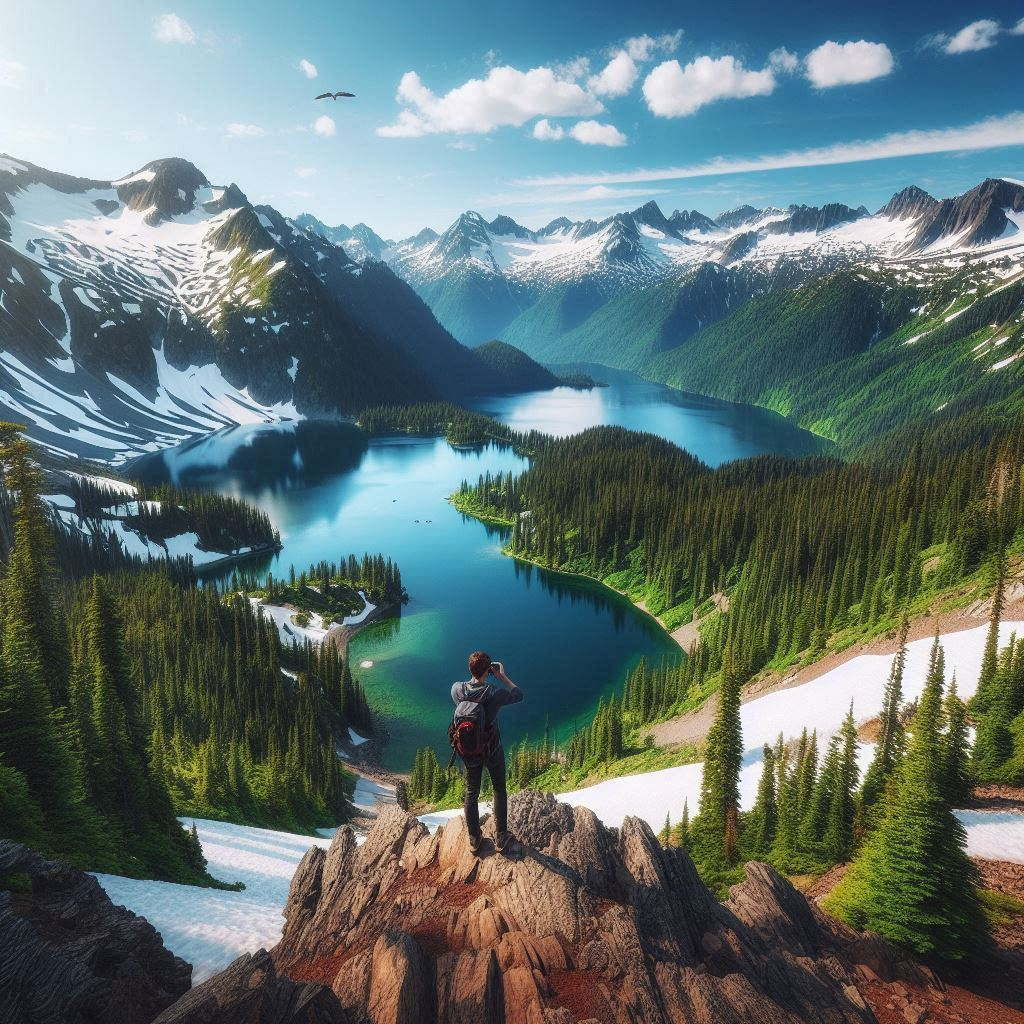Olympic National Park: A Natural Wonderland
Introduction
Olympic National Park, located in the state of Washington on the Olympic Peninsula, is a pristine wilderness that captivates visitors with its diverse landscapes. Encompassing nearly a million acres, the park boasts glacier-capped mountains, ancient temperate rainforests, and rugged coastlines. Let’s explore this natural wonder together.
Body Content
1. Types of Content
a. Price and Time
- Price: Entry to Olympic National Park typically requires an entrance fee, which varies based on vehicle type and duration of stay.
- Time: Plan your visit wisely—whether it’s a day trip or an extended stay, there’s something for everyone.
b. Pros and Cons
- Pros: Stunning vistas, abundant wildlife, and endless outdoor activities.
- Cons: Weather can be unpredictable; some trails may be challenging.
2. Key Concepts
- Biodiversity: Olympic National Park hosts diverse ecosystems, from alpine meadows to coastal tide pools.
- Wilderness Preservation: Over 95% of the park is designated as wilderness, ensuring its protection.
3. Importance
- Ecological Significance: The park supports rare species, including the Roosevelt elk and the marbled murrelet.
- Cultural Heritage: Indigenous Makah traditions and historical sites enrich the park’s significance.
4. Challenges and Opportunities
- Climate Change: Glacial retreat and altered ecosystems pose challenges.
- Tourism: Balancing visitor experience with conservation efforts.
5. Ethical Considerations
- Leave No Trace: Encourage responsible behavior to minimize impact.
- Respect Wildlife: Keep a safe distance and avoid feeding animals.
6. How to Find a Reliable Experience
- Visitor Centers: Seek information and maps at visitor centers.
- Guided Tours: Consider ranger-led programs for deeper insights.
7. Regulations
- Permits: Some backcountry areas require permits.
- Wilderness Camping: Familiarize yourself with camping regulations.
8. Taxation
- Entrance Fees: Understand the fee structure and its purpose.
- Local Economy: Tourism revenue benefits nearby communities.
9. Recent Developments
- Trail Improvements: Learn about recent trail enhancements.
- Climate Adaptation: Efforts to mitigate climate impacts.
10. Tips for Navigating
- Weather Preparedness: Layers are essential due to varying conditions.
- Trail Selection: Choose trails based on fitness level and interests.
11. Top 10 Must-See Spots
- Explore Hurricane Ridge, Hoh Rain Forest, Ruby Beach, and more.
Conclusion
Olympic National Park invites you to connect with nature, explore its wonders, and leave with a renewed appreciation for our planet. Whether you’re a seasoned hiker or a curious traveler, this park promises unforgettable experiences.
FAQs and People Reviews
- FAQs:
- What’s the best time to visit Olympic National Park?
- Are pets allowed in the park?
- Can I camp in the wilderness?
- People Reviews:
- “Olympic National Park exceeded my expectations! The rainforest felt like stepping into a fairytale.” — Emily
- “The rugged coastline and misty mornings—pure magic!” — Alex
Remember, this article is a labor of love for nature enthusiasts and adventure seekers alike. Enjoy your journey through Olympic National Park! 🌲🏞️🌊
Was this helpful? Let me know if you need any further details or revisions! 😊
Certainly! Let’s delve into the tax implications related to visiting Olympic National Park:
-
Entrance Fees and Tax Deductibility:
- When you pay the entrance fee to Olympic National Park, it’s essential to understand that this fee contributes to park maintenance, conservation efforts, and visitor services.
- Unfortunately, entrance fees are generally not tax-deductible for individual visitors. They fall under the category of personal expenses rather than charitable contributions.
-
Business-Related Tax Considerations:
- If you’re a business owner or a self-employed professional and visit the park for work-related purposes (e.g., photography, research, or content creation), you may be able to deduct certain expenses.
- Keep detailed records of your business-related activities within the park, including any associated costs (such as travel, equipment, or guides).
-
State and Local Taxes:
- Depending on your state of residence, there may be additional taxes related to outdoor activities, tourism, or environmental conservation.
- Check with your local tax authority to understand any specific tax implications related to visiting national parks.
-
Donations and Charitable Contributions:
- While entrance fees aren’t tax-deductible, consider supporting nonprofit organizations that work to protect national parks.
- Donations to organizations like the National Park Foundation or local park associations may be tax-deductible.
-
Consult a Tax Professional:
- For personalized advice, consult a tax professional or accountant who can provide guidance based on your specific situation.
- They can help you navigate any potential tax benefits or implications related to your visit.
Remember that tax laws can vary based on individual circumstances and location, so seeking professional advice is crucial. Enjoy your exploration of Olympic National Park, and appreciate the natural beauty it offers! 🌲🏞️🌊
Is there anything else you’d like me to include or clarify? 😊
Certainly! Here are some common FAQs related to Olympic National Park:
-
When is the best time to visit Olympic National Park?
- The park is accessible year-round, but the best time depends on your preferences:
- Summer (June to August): Ideal for hiking, wildflower blooms, and clear skies.
- Fall (September to November): Gorgeous fall foliage and fewer crowds.
- Winter (December to February): Snow-covered landscapes and solitude.
- Spring (March to May): Blooming rhododendrons and milder weather.
- The park is accessible year-round, but the best time depends on your preferences:
-
Are pets allowed in the park?
- Yes, but with restrictions:
- Pets must be on a leash (6 feet or shorter) at all times.
- They are not allowed on most trails or in wilderness areas.
- Check specific regulations for designated pet-friendly areas.
- Yes, but with restrictions:
-
Can I camp in the wilderness?
- Yes, wilderness camping is allowed, but you’ll need a backcountry permit.
- Follow Leave No Trace principles and camp at designated sites.
Remember to check the official Olympic National Park website for the most up-to-date information and any additional FAQs. Enjoy your adventure! 🌲🏞️🌊
Is there anything else you’d like to know? 😊

